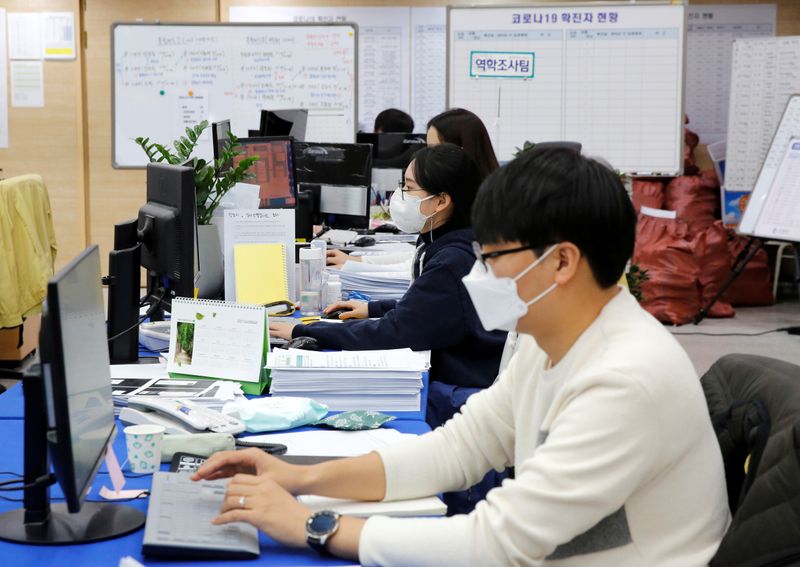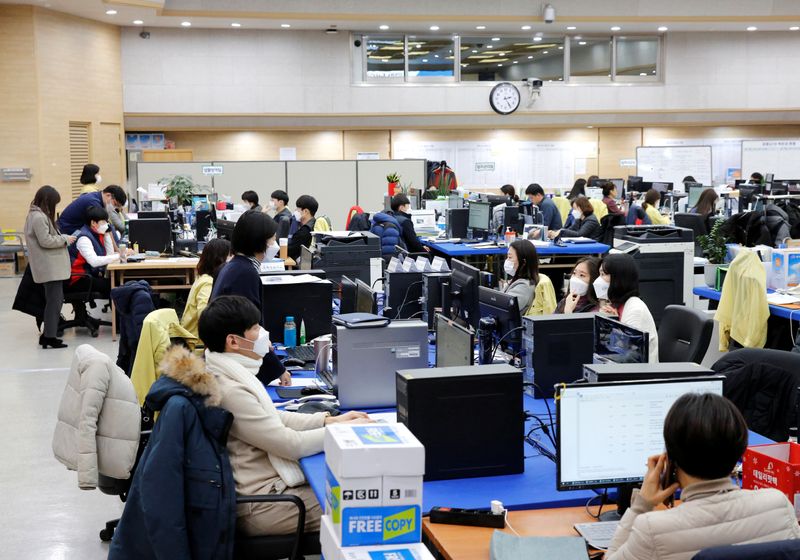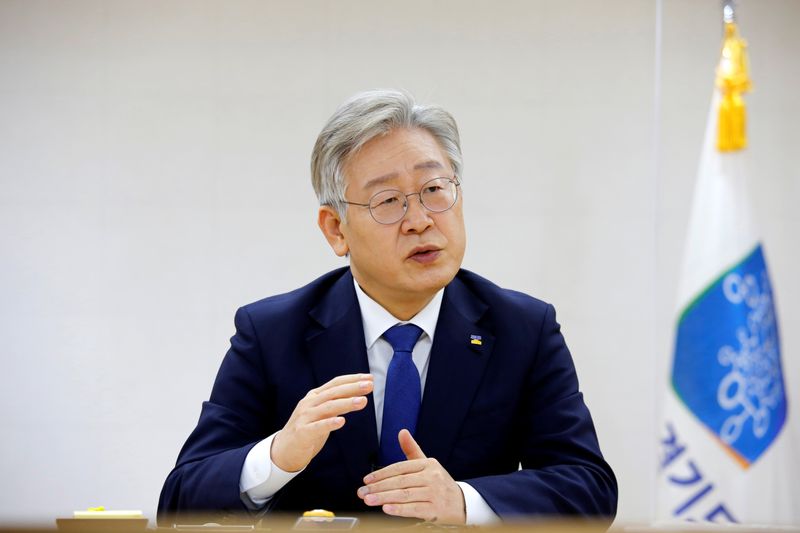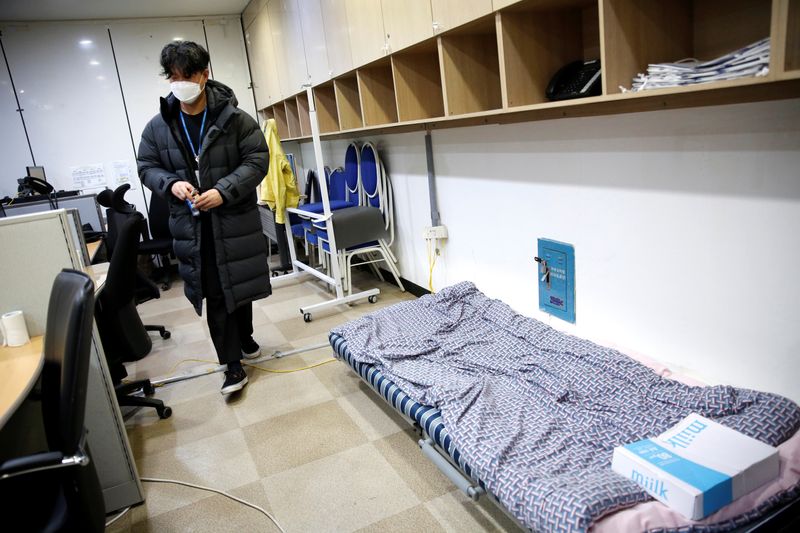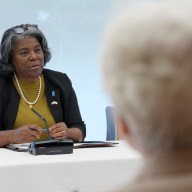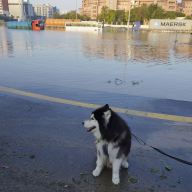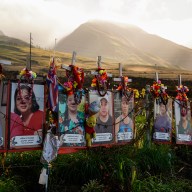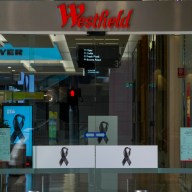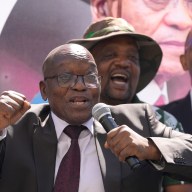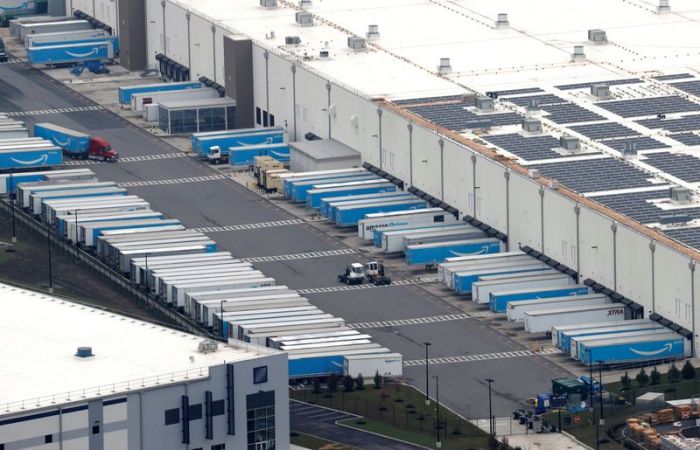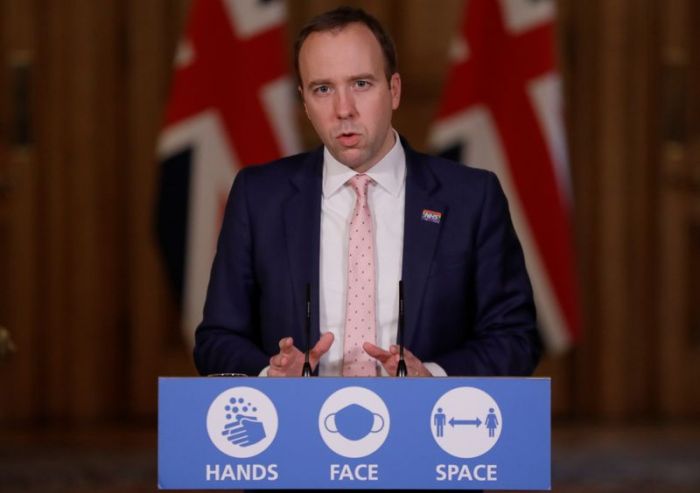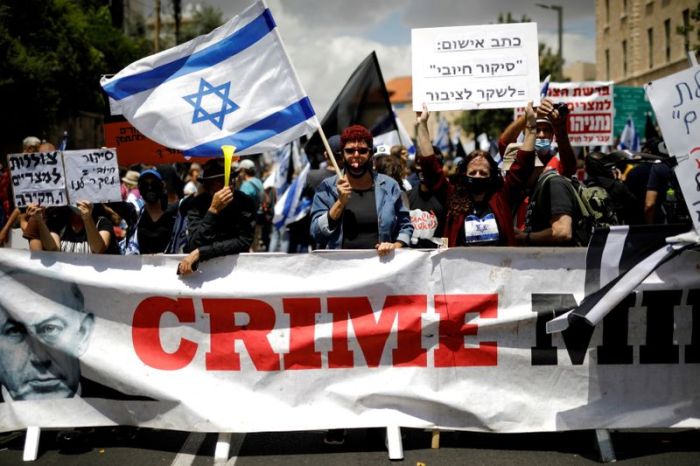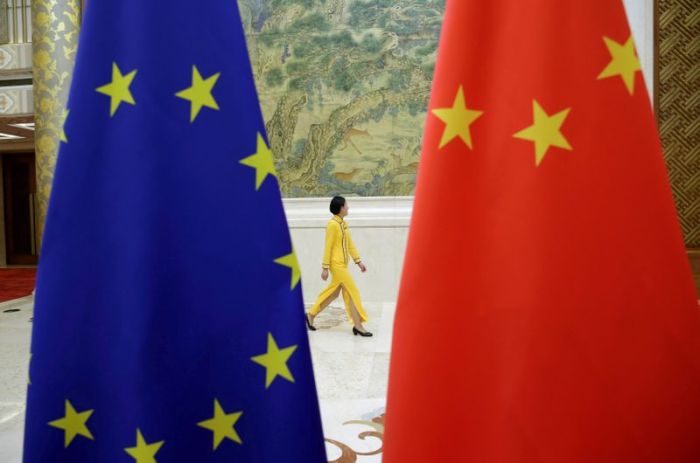INCHEON/SUWON, South Korea (Reuters) – On the fourth floor of the Incheon city hall, South Korean epidemiological investigator Jang Hanaram’s office is stuffed with six desks, two folding cots, and a table strewn with instant noodles, energy drinks and digestive aids.
Jang is one of six staffers who work 24-hour shifts in the cramped space, frantically tracing and contacting potential coronavirus cases in South Korea’s third largest city as the country battles its largest wave of infections yet.
Jang said he knew this wave was different in early December when the bright red messages that report confirmed cases began to multiply in the chatroom on his computer screen.
“I thought, ‘Wow, this is really getting out of control,'” he told Reuters.
South Korea won international plaudits earlier this year when it quickly tamped down outbreaks by fielding an aggressive, high-tech contact tracing system that mined cellphone location data, credit card records, CCTV footage, and other information to track down and isolate potential patients.
But after a summer of touting South Korea’s approach as a model for the world, officials acknowledge the success of those earlier efforts helped fuel over-confidence that left them straining to contain a third wave and scrambling to defend a cautious vaccine timeline.
In eight interviews with Reuters, frontline fighters in South Korea’s war against the virus outlined what they say were critical mistakes by the government. Failings included not investing in enough manpower and training for the tracing programme, not mobilising private hospitals fast enough to free up more beds, indecisive social distancing policies, and adopting a slow approach to securing and rolling out vaccines.
To wield its digital tools, South Korea relies on an army of public health workers and conscript doctors like Jang, a recent medical school graduate who is working as a contact tracer in place of his mandatory military service.
Jang says the overworked and underpaid conscripts or other public health doctors rotate too quickly in and out of their positions, while many of the new recruits have little to no training.
“The sense of fatigue is very high now,” he said.
Compared to the disasters unfolding in the United States, Europe and other virus hot spots, South Korea’s 52,550 total cases and daily high of 1,097 are still low.
But this new wave is more persistent and widespread than any of the previous surges, and has led to an unprecedented spike in deaths, with some patients dying before hospital beds become available. The number of active cases is now more than double that of the previous high in March.
“Despite the warnings, over-confidence and excessive optimism had blossomed in many people’s minds,” said Lee Jae-myung, governor of Gyeonggi Province, the most populous area in the country.
When asked whether the government had been overconfident, Yoon Tae-ho, director-general for public health policy, acknowledged there were some areas where authorities should have responded faster, including mobilising various medical resources.
“We extremely regret that we have fallen behind a bit where we should be one step ahead of the virus,” he said at a briefing on Tuesday. Still, he said authorities were working to fix any problems and were confident the country could “tackle this third wave if the government, medical teams and people unite.”
TRACING SYSTEM STRAINED
Unlike previous waves of infections, which were focused mostly on individual events or organisations such as churches or nightclubs, the current surge of cases is being driven by smaller clusters at places like restaurants and offices, which are harder to trace. And nearly a third of recent cases come from entirely unknown origins.
Since the pandemic began, South Korea has more than doubled the number of investigators, from around 130 to 305, according to the Korea Disease Control and Prevention Agency.
To supplement their ranks further, the government has recently mobilised members of the military and police, but it will take time to train more long-term, experienced staff, Yoon said.
Lim Seung-kwan, chief of Gyeonggi Province’s COVID-19 emergency response task force, said it is time to consider dropping mass tracing in favour of more targeted epidemiological surveys that seek to better understand specific patterns of the virus’ spread while freeing up trained medical personnel to provide patient care.
“It might be better to redeploy those who were tasked with testing and tracing,” he said.
Because of the workload, Jang said they have already begun to scale back their tracing, for example no longer recording movements where the patient was only in a spot for a few minutes while wearing a mask.
MISSED OPPORTUNITIES
Gyeonggi governor Lee, a member of President Moon Jae-in’s ruling Democratic Party, agrees the country can no longer rely on tracing each case, and has called for more flexible measures, such as mass testing of specific areas and using less accurate but faster antigen testing kits for pre-screening.
The over-confidence drove an incremental approach to social distancing measures, Lee added, arguing more drastic but temporary measures would have led to less fatigue among the public.
South Korea has never imposed full lockdowns, and as recently as November was handing out vouchers to encourage domestic travel and tourism. The prime minister has said imposing the highest level of social distancing would be a last resort because of the economic damage.
Frustrated by what they see as the national government prioritising the economy over stopping infections, Lee and the leaders of Seoul and Incheon cities this week imposed strict gathering limits for the Christmas and New Year holidays.
Ma Sang-hyuk, vice president of the Korean Vaccine Society, told Reuters the sense of complacency shaped the country’s vaccine policy as well, with the government seeing low daily cases during the summer as evidence they did not need to hurry.
“The government overlooked the pandemic as the daily cases began to stabilize and thought they could ride it out without the vaccine,” he said.
Stung by criticism his government’s plan to begin providing vaccines in February or March – months after some other countries – was too relaxed, Moon on Tuesday promised a public vaccination programme would “not begin too late” and his office emphasized the country would eventually buy enough doses to cover more than 85% of the population.
Lim said the government should have prepared for worst case scenarios but failed to scale up efforts it had made in earlier waves, such as quickly securing enough beds in private hospitals.
“We came to believe that everything was going to be OK if we wear masks well and stick to what we had been doing,” he said. “But that belief held authorities back from looking at why they were slow to act, and whether there were lessons to learn, from both successes and failures.”
(Reporting by Sangmi Cha, Hyonhee Shin, and Josh Smith; Editing by Lincoln Feast.)

